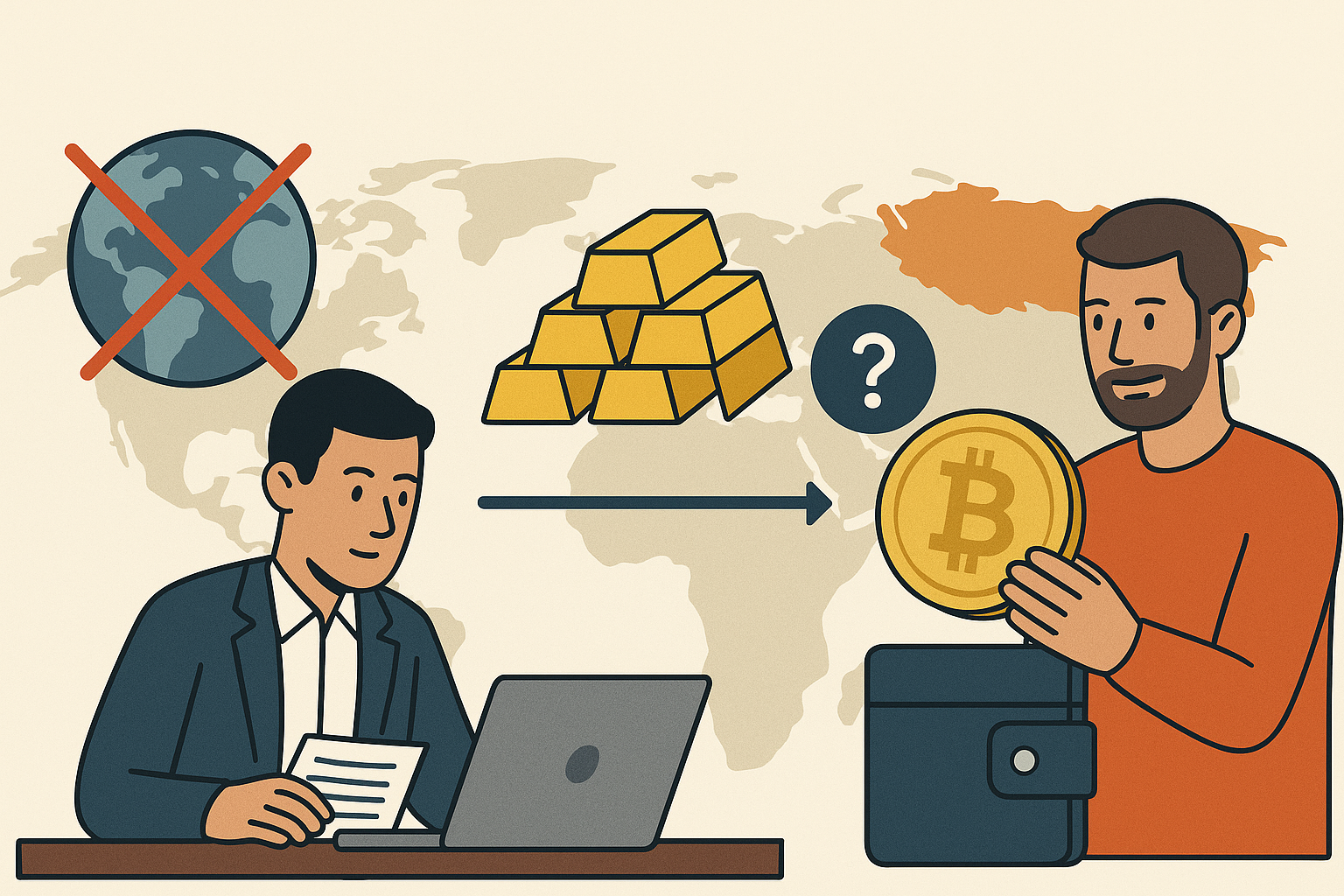
Explore Adaptive Strategies with Real-World Case Studies Like Russia’s Pivot
In a world reshaped by geopolitical tensions, financial sanctions are no longer just diplomatic tools, they’ve become catalysts for innovation in global payments.
From Russia’s pivot to gold and crypto to the resurgence of bilateral netting between sanctioned states and their trade partners, we’re entering a new era of cross-border commerce. For global businesses, this means navigating a fragmented payment landscape that’s less reliant on SWIFT and more dependent on alternative rails and real-time value transfer systems.
This article explores how sanctions are redefining international payments and what adaptive strategies including netting, crypto rails, gold settlement, and stablecoin infrastructure are emerging in response.
🌍 The Sanctions Landscape: From SWIFT to Isolation
In 2022, the removal of major Russian banks from the SWIFT network was a watershed moment. Within weeks, trillions in trade and capital flows were forced to seek alternatives.
SWIFT, once the unshakable backbone of international banking, suddenly became a chokepoint. Countries under sanctions from Russia and Iran to Venezuela and parts of Africa began experimenting with alternative settlement systems.
Key shifts included:
- Russia’s SPFS (local SWIFT alternative)
- Bilateral netting arrangements with allies like India and China
- Increased use of gold-backed trade
- Explosive growth in crypto-based cross-border rails
🔁 Strategy #1: Bilateral Netting
What It Is:
Netting is when two countries (or trading entities) settle only the net difference between imports and exports, instead of transferring full invoice values internationally.
Why It Works:
- Minimizes exposure to international banking rails
- Reduces dependency on reserve currencies like USD
- Settles trade imbalances without requiring full SWIFT or USD access
Russia’s Example:
- Russia and India explored settling oil and fertilizer trades in rupees and rubles, balancing trade via netting
- China and Russia increased yuan-ruble settlements to avoid USD exposure
- Similar arrangements surfaced between Iran and Turkey, and Pakistan and Russia
🪙 Strategy #2: Gold as a Settlement Tool
The Comeback of a Classic:
In response to frozen reserves and blocked USD access, Russia began pricing some exports in gold or demanding settlement in commodities.
Why Gold?
- It’s globally accepted
- Doesn’t rely on banking infrastructure
- Serves as a neutral store of value, especially in politically charged regions
Real-World Case:
In 2023, central banks in BRICS countries accelerated gold purchases. Russia’s use of gold to settle oil trades with Asia and the Middle East was viewed as a hedge against dollar-based sanctions.
💹 Strategy #3: Crypto-Powered Payment Rails
Digital assets have filled the gap left by the traditional banking system for sanctioned and underbanked regions.
Benefits:
- Borderless
- Near-instant
- Non-custodial (in many cases)
- Stablecoins offer dollar-equivalent value without U.S. banking rails
Examples:
- Russian exporters using USDT on Tron or USDC on Ethereum to receive cross-border payments
- Venezuelan businesses routing oil payments via Bitcoin or stablecoins
- Iranian freelancers receiving stablecoins from clients worldwide, avoiding capital controls
These flows often settle peer-to-peer, or via intermediaries using platforms like Binance, OTC desks, or local PSPs.
🛠️ The Future of Payments – Stablecoin Based Settlements S.B.S (e.g., Yativo)
As crypto and netting flows mature, new infrastructure players like Yativo enable companies to:
- Accept stablecoins globally
- Instantly convert into local currency
- Settle via real-time payment systems like Pix (Brazil), SPEI (Mexico), or PSE (Colombia)
- Avoid the need for direct SWIFT exposure
Yativo serves as a compliance-friendly, programmable layer that abstracts away geopolitical risk, enabling even small and medium-sized businesses to remain globally connected.
🧭 Navigating the New Normal
| Old World | New World |
|---|---|
| SWIFT | Local networks (SPFS, CIPS) |
| USD Wires | Stablecoin rails (USDC, USDT) |
| FX Liquidity from Banks | Netting, gold, and stablecoin conversions |
| Cross-border bank accounts | Virtual accounts and token-based flows |
Global businesses now face a choice:
- Stick with legacy rails and risk delays or blocks
- Or adopt multi-rail, multi-currency strategies that blend traditional finance with digital innovation
🧠 Final Thoughts: Adapt or Be Isolated
As financial sanctions become more surgical, resilience and optionality in payments are no longer a luxury, they’re essential.
From gold and crypto to embedded virtual accounts and FX automation, the world is building a parallel financial infrastructure, one that’s more programmable, decentralized, and politically neutral.
👉 Looking to future-proof your cross-border payments?
Explore how Yativo supports programmable global flows with stablecoin settlement, virtual accounts, and real-time disbursements across Latin America, Asia, and beyond.